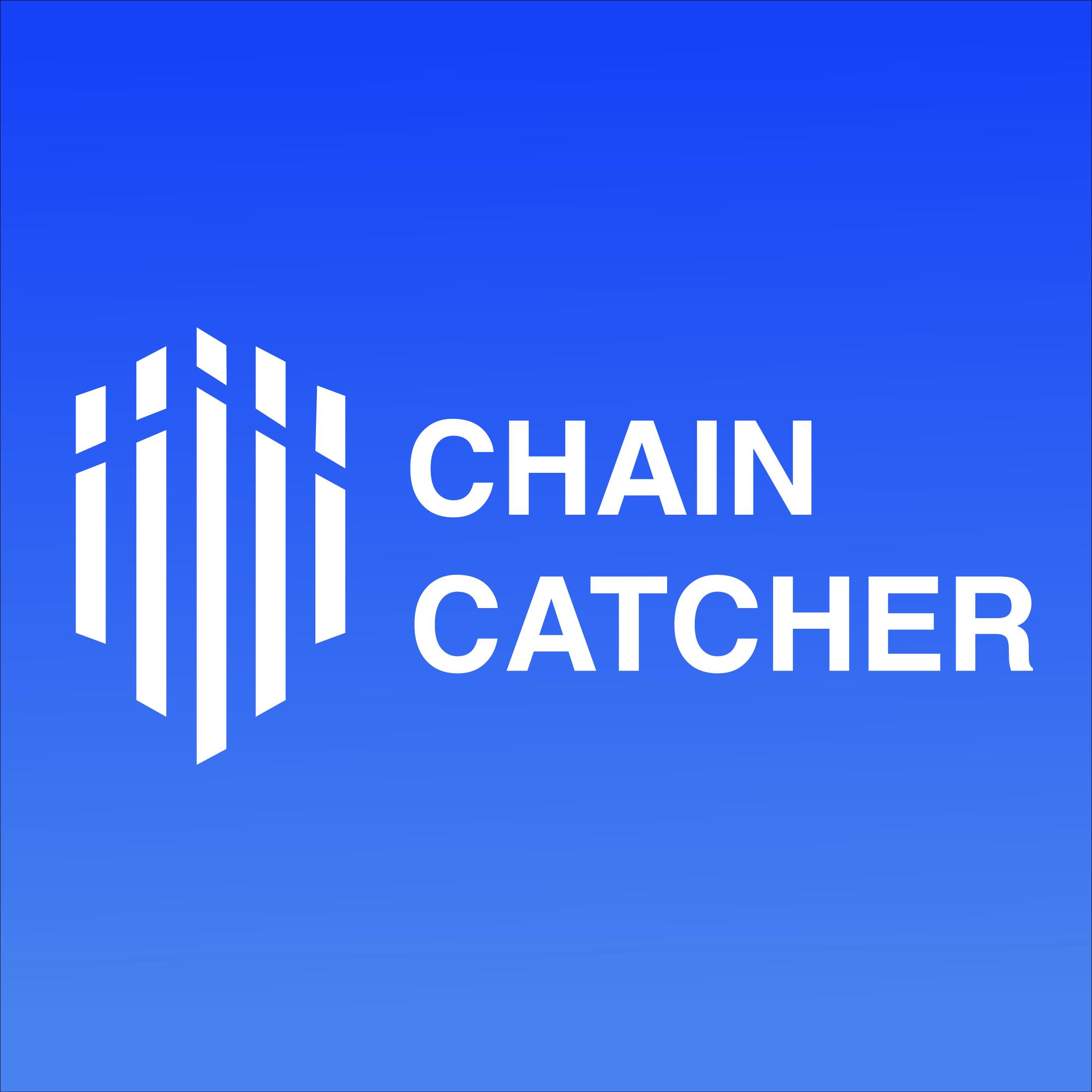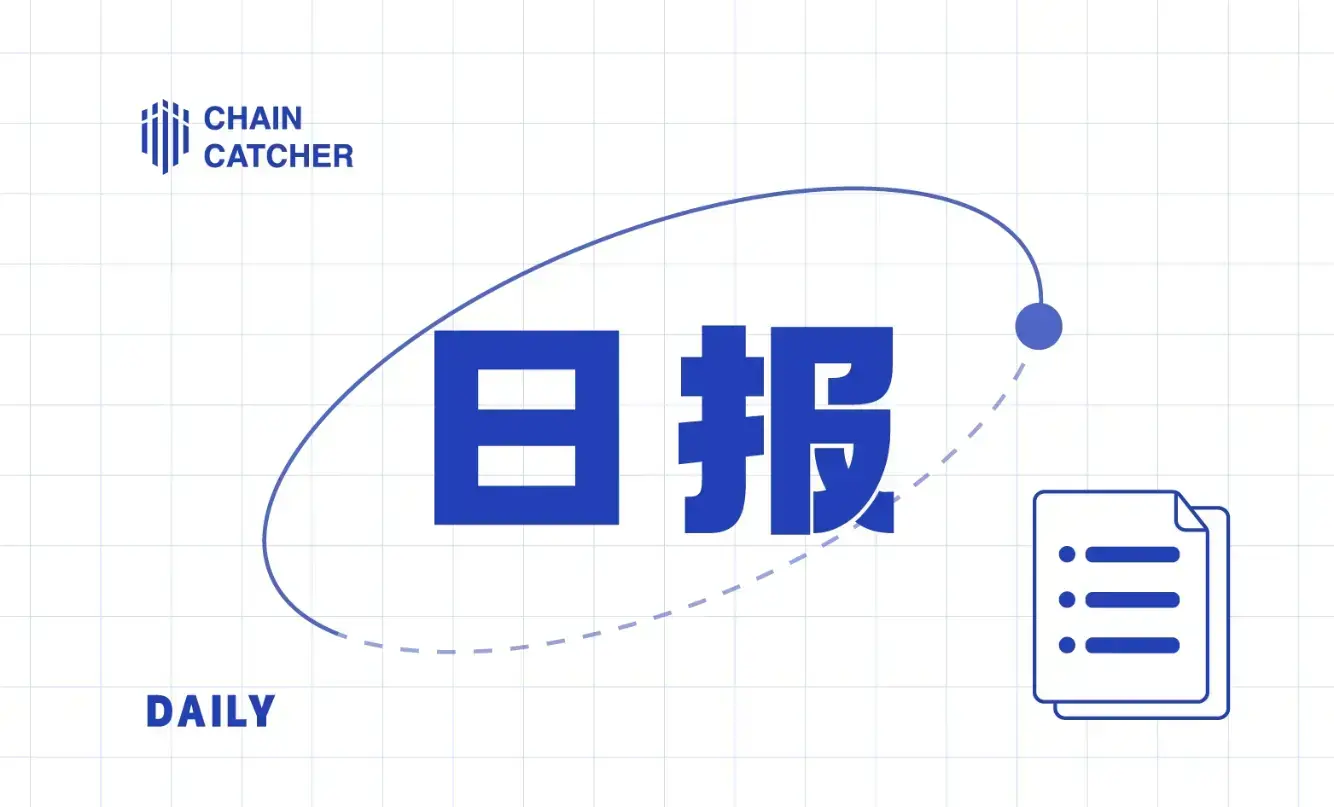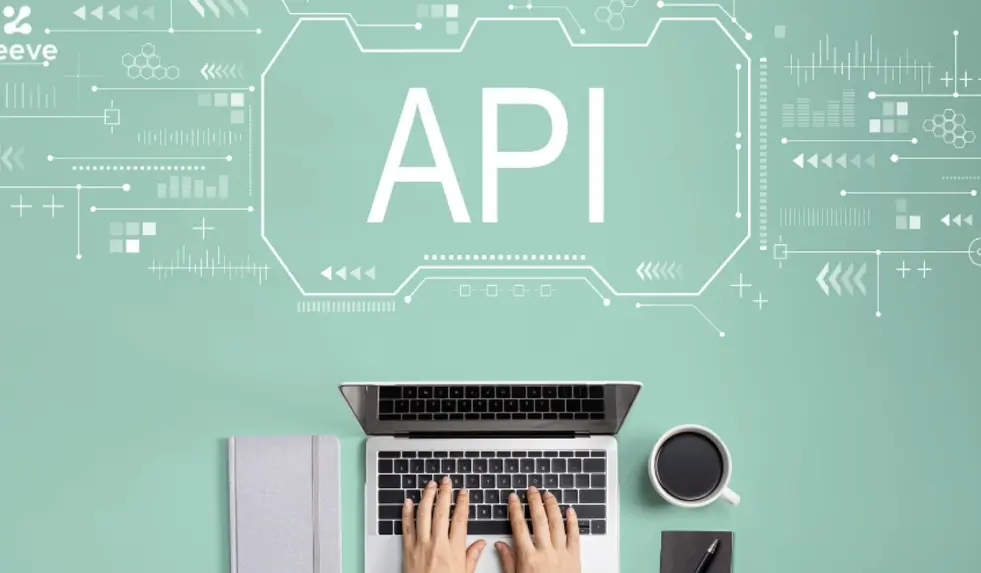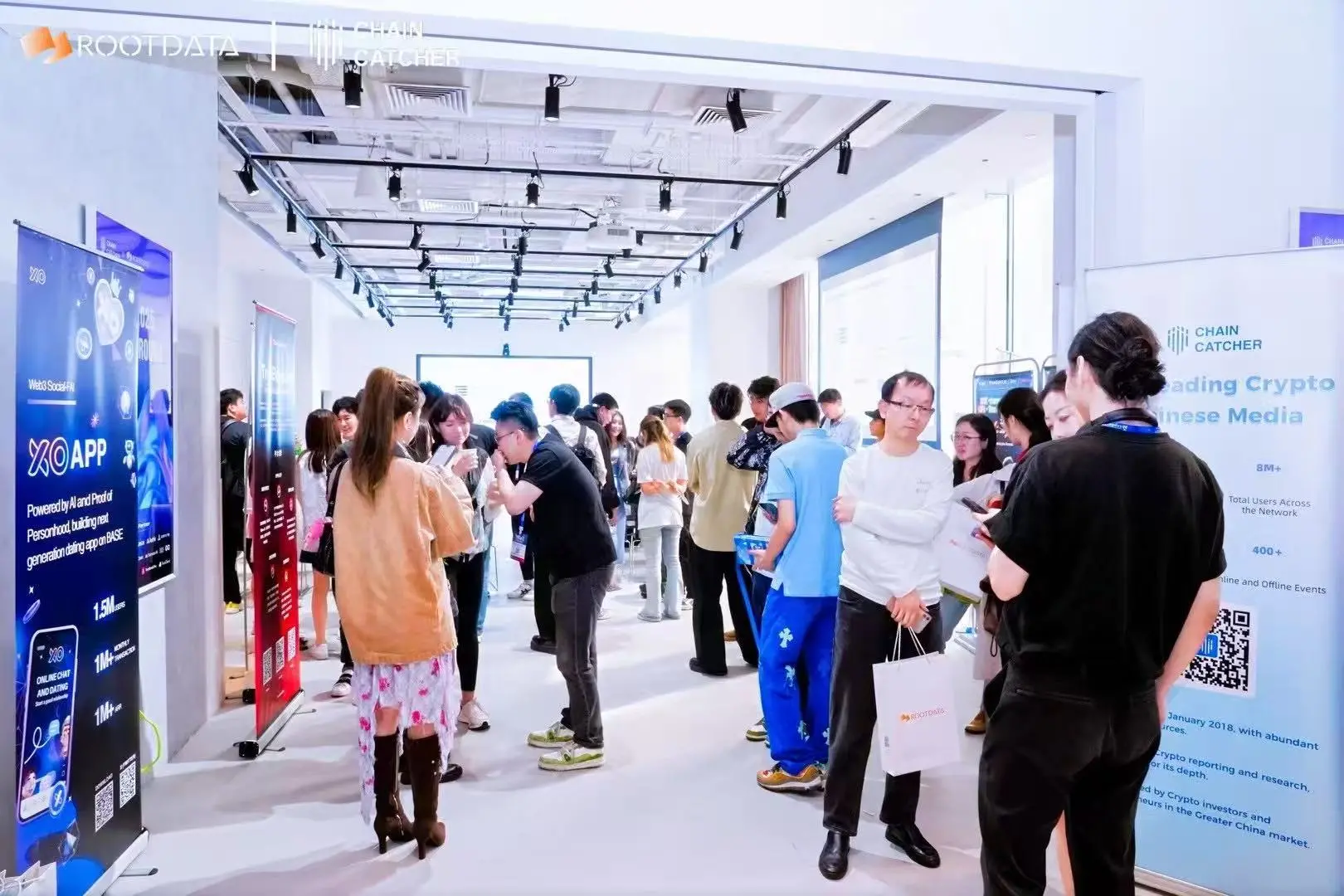Dialogue RootData List Listed Institutions | SevenX Co-founder Eraser: It's the Right Time to Invest in Web3 Applications
Interview: Arain, ChainCatcher
Guest: Eraser, Founding Partner of Seven X
*Organized by: Scof, *Arain, ChainCatcher
During the "DeInsight 2024" annual summit held by the Web3 asset data platform RootData in collaboration with ChainCatcher during the Bangkok Devcon, the "RootData: 2024 Web3 Industry Development Research Report and Annual List" was officially released. (Click the link to view the full report and list).
This list is the second annual selection launched by RootData following its first release in 2023. This year's RootData List 2024 covers five categories: Top 50 Projects (completed TGE), Top 50 Projects (not yet conducted TGE), Crypto VC Top 50 Investment Institutions, Top 10 Angel Investors, and Top 20 Best CEOs.
ChainCatcher will publish a series of articles, engaging with the institutions listed in the RootData List 2024, seeking builders who navigate through bull and bear markets and tracking the latest trends in Web3.
SevenX was successfully selected as a Crypto VC Top 50 and recently appeared on RootData Space to share its path to success.
Founded in 2020, Seven X launched its first fund in August of that year, with a scale of $5 million and an exit return rate of 700%. Notable projects it invested in include the asset issuance platform DAOMaker and the Web3 application Mask Network. SevenX Ventures currently manages three main funds and one FoF, with assets under management in the hundreds of millions of dollars. Notably, SevenX Ventures practices boutique investment rather than being a track-type player, thus proposing the "Three Drafts" theory + "CIVIC" model + industrial chain layout.
In this interview, Eraser, the founding partner of Seven X, shared the process of forming a Web3 investment system from the perspective of IT industry investment, pointing out that there are currently two main investment lines in the market: the enhancement of infrastructure and consumer-driven development, predicting an explosion of full-chain applications in the next 3-5 years.
"I personally do not have much confidence in the integration of Web3 projects with the real world," Eraser also frankly stated the areas he is currently not optimistic about.
The following are the main contents of the Space:

My computer background has shaped my systematic investment thinking
Arain: Can you briefly introduce yourself and SevenX?
Eraser: My experience can be traced back to before I entered Crypto. I worked in Africa for six years, participating in the infrastructure construction and investment of the "Belt and Road" initiative. During my time in Africa, I witnessed multiple instances of currency devaluation and hyperinflation, especially in Nigeria and Angola. These experiences instilled in me a belief in Crypto. Economic collapse and the difficulties of people's livelihoods made me deeply aware of the severity of the problems.
In 2017, my partner entered Crypto ahead of me and encouraged me to learn more about various industries. Subsequently, we joined one of the earliest funds in the country at that time. In 2020, I co-founded Seven X with two partners.
Arain: You mentioned you have a computer background, but your first job was in Africa working on the Belt and Road investment. Why is that?
Eraser: Although I studied computer science at Nanjing University and pursued graduate studies at the University of Waterloo, I realized after returning to China that programming was not my strong suit. Initially, I joined the strategic consulting industry and later participated in the Belt and Road projects.
While I am not a technical expert, I hope to think about projects, industries, and investment strategies from a technical perspective. My computer background makes me more focused on logic and architecture, which is also reflected in our investment style, showcasing a relatively systematic way of thinking. This combination has helped me find my position in the investment industry.
Viewing Web3 development through the lens of IT investment: Enhancing infrastructure and consumer-driven development
Arain: SevenX Ventures focuses on boutique investments, which differs from the early investment style of generally betting on tracks. How was this theoretical system created?
Eraser: At the end of the ICO era, a large number of VC investment funds emerged. At that time, people did not pay much attention to research and lacked investment logic; many simply followed the trend. As market returns were influenced by overall Beta, we realized that this approach was unsustainable, so we began exploring a methodology and logical framework to guide our investment philosophy. This framework has continuously evolved, including our theoretical drafts and judgment models. Recently, I believe there are two important themes in the market: the enhancement of infrastructure and consumer-driven development. Infrastructure remains a branch of the computer industry, and we can draw on the development standards of the internet industry over the past 20-30 years to deduce the logic of the entire industry.
I believe the three fundamental pillars of the computer industry are computing, storage, and networking. From the development of the IT industry over the past few decades, the sequence of development for these three is clear. First, the evolution of computing speed and paradigms is fundamental. Initially, single-core computers, like Ethereum, had limited processing power; later, multi-core, multi-threaded, and parallel computing gradually became mainstream, and some current infrastructure projects emphasize this. In the process of computing development, general computing gradually evolved into specialized computing, forming a division of labor for different computing tasks. For example, the central processing unit initially handled all computing, while graphical computing was later assigned to GPUs. In the future, we may see more changes in hardware architecture to meet the needs of different application scenarios. Storage has also evolved from small-capacity hard drives to large-capacity storage, giving rise to new concepts such as databases, data warehouses, and data markets.
In the past decade, the industry has primarily revolved around computing, while the future may evolve towards storage and data-related protocols. Regarding networking, I believe it can be roughly divided into two categories in the Web3 industry: one is cross-chain and single-chain connection protocols; the other is truly decentralized physical network connections. This involves many depin projects that achieve global connectivity through hardware. Overall, the process of technological evolution can refer to the history of the IT industry, but we need to be cautious about the pace to avoid going too fast or too slow. For example, investing in decentralized databases in 2017 may have been too far from actual market demand.
The changes in the IT industry over the past 30 years are evident, from the rise of SaaS to Web 1.0, Web 2.0, and the transition from fixed internet to mobile internet, all driven by the continuous increase in application scenarios, which in turn prompted the upgrading and transformation of infrastructure. Before the widespread adoption of smartphones, it was hard to imagine how dependent people would become on phones in the future. Today, we similarly find it difficult to foresee how the entire internet industry might be based on blockchain or Web3 in the next ten or twenty years. Although I am not fond of the term "Web3," such possibilities do exist. Currently, discussions about application scenarios are very heated. The biggest pain point facing Web3 is the oversupply of infrastructure, especially in the past year, as several venture capital firms collapsed, leading everyone to realize that more attention should be paid to the consumer end. However, to date, the Web3 field has not produced particularly successful projects, and the industry's enthusiasm seems to have refocused on the issuance of new assets.
In terms of consumer logic, we have conducted much thinking. However, we have not yet formed a complete investment model to ensure that application investments are successful. The success of applications often has randomness and does not solely rely on a single idea or new user interaction method. We participated early in Web3 social investments, including from Mask Network to Cyber Connect, and most recently invested in Blue Sky, a project incubated by the former Twitter team. In this process, we realized that current users are not focused on improving their experience or reducing costs through blockchain technology or Web3 services. Reflecting on the early days of the internet, it did help people save a lot of costs, such as in the way information was communicated, which was very expensive at that time.
I believe the core of blockchain is not to reduce the cost of the internet but to introduce trust and immutability. These characteristics lead to higher costs, such as redundant storage and consensus mechanisms. Therefore, the transaction costs of blockchain are destined to be higher than the standards of Web 2. So what does Web 3 actually bring to users? I believe there are two key points. First is cross-border payment and settlement, especially with the emergence of stablecoins, which significantly reduces the complexity and cost of cross-border payments and currency exchanges. Second, the threshold for asset issuance has been significantly lowered. In a traditional environment, only listed companies or institutions backed by the government are qualified to issue stocks or bonds. However, on the blockchain, individuals and small groups can easily issue NFTs, tokens, or publish their works, such as music, comics, or articles, through content platforms. Blockchain has significantly lowered the threshold for asset issuance, allowing anyone to publish and trade their assets at a very low cost. Thus, the real cost reduction brought by blockchain mainly occurs on the supply side, not the consumer side. It makes some previously difficult-to-realize assets or transactions convenient, even allowing for permissionless asset issuance.
Currently, the problem we see is that consumer demand has not significantly expanded, but assets are continuously being issued in large quantities. Whether it is new token projects or NFTs, the supply of assets is rapidly increasing, and costs are decreasing, but demand is growing slowly, resulting in a situation of "oversupply." This leads to capital misallocation, with more suppliers than demanders, causing disappointment in the industry and difficulties in price increases.
Web3 may reduce costs through incentive mechanisms. By reshaping the incentive environment, people can obtain corresponding assets or rights based on their contributions to projects or ecosystems, rather than just traditional employment relationships.
In summary, I believe the areas where Web3 truly reduces costs are mainly in cross-border payments, asset issuance, and incentive systems, while it is more challenging to reduce costs in other areas, and it may even increase costs. Therefore, I tend to support projects that genuinely bring cost optimization in these areas and will not invest in projects that increase costs on-chain.
Recently, I have observed an interesting phenomenon: a new generation of crypto consumers is blurring the lines between consumption and investment. In Web3, we see a reverse trend of "investment as consumption" similar to "consumption as investment." For example, when people participate in meme coins, game tokens, or gambling activities, even though they invest little and most lose, they still enjoy it. These "investments" feel more like a form of entertainment consumption to them, satisfying psychological needs rather than economic returns. Therefore, in current entrepreneurship and investment, we may need to rethink how to break down the boundaries between consumption and investment, making the two more integrated. By simplifying the investment decision-making process, we can make it feel more like a consumption experience, or even a form of entertainment. This way, investment is more likely to attract public participation and achieve broader popularity. These ideas are still in their early stages but are worth further exploration.
Arain: I can hear the industrial logic you just mentioned, which is basically your reinterpretation of the IT industry. You mentioned that it is still centered around computing; what do you see as the next step?
Eraser: About two to three years ago, we began to lay out investments in storage and data fields. For example, we are one of the largest supporters of the Arweave ecosystem and have invested in several projects within the Arweave ecosystem. Additionally, we have supported early projects such as decentralized databases and decentralized data lakes, like Space and Time. At the same time, we have also invested at the data protocol level, including RSS3 and Debank. As on-chain activities and transaction volumes increase, the demand for data storage is also rising, not only for transaction data but also for various other types of information. For instance, permanent storage public chains like Arweave have already shown demand. Early data protocol projects, such as Ocean Protocol, although initially aimed at promoting data trading, have not made significant progress. I believe that although everyone emphasizes that data is the future and the "oil" of AI, the application and circulation of on-chain data still face many challenges.
I believe the data in Web3 is not rich enough; the amount of user data and the state of on-chain storage have not reached ideal standards. Moreover, the industry itself is still in its early stages—if computing power is not yet perfect, investing in databases may be premature. We should remain patient and observe industry trends from the perspective of entrepreneurs and VCs, appropriately looking six months to a year ahead, rather than rushing to chase new technologies. It is also possible that the industry's focus may shift, such as a weakening demand for data, while the combination of AI and finance becomes more important, ultimately bringing us back to the computing field. Such changes in technological evolution are also reasonable.
An increasingly mature investment system: Post-investment and heavy asset management
Arain: Can you evaluate the current market and several market hotspots using your investment system?
Eraser: Here are my personal views. I do not have much confidence in the integration of Web3 projects with the real world. I believe that in the next 3 to 5 years, the relationship between this industry and the traditional world will remain parallel and difficult to merge. This is because if these projects are too radical, they will face regulation, leading to centralized control, which contradicts their entrepreneurial intentions.
In our current investments, the only Depin project is IO.net. We do not view it as a typical Depin project but rather as a bilateral market project aimed at solving the matching problem between supply and demand, rather than simply reducing GPU costs.
Regarding the combination of AI and Web3, I take a wait-and-see approach. AI may become a tool, but its core concept does not align with Web3's solution to trust issues. Therefore, we are very cautious about investing in AI and Web3 projects. As for DePin, we believe that the most important thing right now is to connect everyone, so we have abandoned all DePin projects related to data sharing. We believe that the era of data sharing has not yet arrived, and establishing an internet connection service that is not influenced by centralization is key. Therefore, we have not invested in similar DePin data projects.
Arain: From the data perspective, SevenX Ventures has invested in hundreds of projects, making it an active investment institution in the market. Can you talk about whether it is easy to implement this boutique investment theoretical system? What challenges and temptations do we encounter in the process?
Eraser: This is a sharp question. As an active VC in the industry, it is difficult for us to completely ignore the noise of the industry and the commonly followed schemes, but we insist on not investing in competitors within the same sub-sector, or rarely doing so.
For example, we were among the first investors in YGG and did not invest in other popular competing projects afterward. We only invested in Merrit Circle after it improved and transformed, no longer being in the same track. Therefore, our only steadfast principle is not to invest in directly competing projects, ensuring that our user base does not overlap with that of competitors. However, we may consider investing in projects within similar tracks or those with overlapping users.
Arain: This year, the number of projects we have invested in and the frequency of our investments have changed compared to previous years. Can you talk about the reasons behind these changes?
Eraser: I believe the biggest change is that our decision-making speed has slowed down, but the amount of each investment has increased. Previously, we typically invested between $800,000 and $1 million, while now the investment amounts often reach $1.5 million or even over $2 million. This is because we have more investment opportunities, leading to longer decision cycles, and the overall number of projects has decreased, but the equity stake in each project is higher.
The reason for this change is that we realized we made mistakes before. First, as the fund size expanded, we adopted a post-investment service-based model. If we invest in too many projects, we cannot devote enough energy to manage them. Second, we have a clearer understanding of the projects we want to invest in and those we do not, rather than randomly trying like before. In the past, the industry lacked a clear vision and theoretical framework, leading everyone to adopt an experimental investment approach. But now we have established some clear frameworks, so while the number of projects has decreased, the investment amount for each project has increased.
From an industry perspective, the total number of projects the market can accommodate will gradually decrease in the future. Now almost everyone can issue tokens or assets, leading to diluted attention. The future market will be layered, with the top layer being a dozen competitive projects, the middle layer consisting of some short-lived projects, and the bottom layer being low-quality projects that only have a few days of popularity.
Arain: You just mentioned that this is a natural growth process for the fund, and at this stage, it is time to do the corresponding things. By the way, can you share the future planning and layout of the fund products?
Eraser: Our layout emphasizes infrastructure in Europe and the U.S. and applications in Asia. European and American entrepreneurial teams focus on values and concepts, such as decentralization and community, while also having strict technical requirements, but this leads to longer cycles and neglect of growth. In contrast, Asian entrepreneurs are more skilled in growth and user operations. China's Web2 applications outperform many European and American products in user experience, which reinforces our belief in this strategy.
At the same time, we are also exploring more community-oriented projects rather than simply relying on traditional VC investment methods. Over the past year, opinions on VC tokens have changed, and many people have begun to question the influence of VCs. Therefore, we hope to find better development methods, such as leveraging community power or co-creation models, rather than solely relying on traditional investment models. This traditional VC business model has clearly reached its end.
Investment rhythm applies the "Pendulum Theory"
Arain: How do you control the investment rhythm? Is there a corresponding evaluation system?
Eraser: This is a good question because we have also made similar mistakes in our investment process. Taking our fund as an example, during the second fund, we were too focused on chasing so-called innovation points, especially in the NFT and metaverse fields, believing that as long as there was novelty, it was worth investing. As a result, many projects seemed too ahead of their time. For instance, in 2021, we invested in dynamic NFTs, possibly the first of its kind globally, but the NFT market itself was not yet mature, and dynamic NFTs found it even harder to gain attention, ultimately failing. Similarly, while the industry was still discussing infrastructure construction, we invested in some applications hoping to change the status quo, such as decentralized music streaming platforms. However, due to insufficient infrastructure and market conditions, this project also failed.
When investing in Web3 projects, we have also faced timing and cycle issues. For example, when technologies like AA wallets and Paymaster were not mature, we attempted to invest in decentralized music streaming projects but failed due to insufficient infrastructure. In response, we proposed the "Pendulum Theory": the blockchain industry oscillates between centralization and decentralization, much like a pendulum swinging back and forth on the train towards decentralization.
Looking back at history, the ICO era emphasized complete decentralization, but this led to frequent project failures and a lack of regulation. Subsequently, centralized exchanges rose and defined the rules for asset issuance. As centralized exchanges exposed various drawbacks, the DeFi Summer of 2020 brought people back on-chain. However, the excessive derivation of DeFi led to issues, with too many projects like food coins and farm coins lacking regulation, ultimately prompting a return to centralized exchanges. Recently, interest in centralized VC investment tokens has waned, while there is a renewed pursuit of meme and other on-chain assets, leaning back towards decentralization. The other end of the pendulum also involves the pursuit of utility versus the void. At times, tokens with application scenarios are highly regarded, while at other times, purely meme coins thrive. Ethereum has also experienced a shift from single-chain dominance to multi-chain competition. I believe this industry will progress through continuous cycles and oscillations.
Arain: The Pendulum Theory can provide us with direction for the next steps. We are currently in several intertwined states, and investing in the future should be the opposite, right?
Eraser: The decentralization of Web3 is not only reflected in technology but also in the distrust of authority. In the past, whether it was listing tokens on Binance, statements from Vitalik, or investments from institutions like a16z, they were seen as authorities. However, people gradually discovered that these authorities do not always yield good results, leading to a decline in blind following. But long-term de-authoritization can lead to chaos, ultimately resulting in the emergence of new authorities, forming a cycle.
Expecting an explosion of full-chain applications in the next 3-5 years
Arain: Most of the projects SevenX has invested in belong to Infra, while we have made fewer investments in application types. What is our current investment rhythm regarding Infra and applications? How do we judge the timing and act regarding the future of applications?
Eraser: In our previous discussions, we mentioned that we began focusing on and investing in some applications over a year ago. In fact, even earlier during our second phase, we invested in some less successful applications. I admit that we were too early at that time because the entire industry's infrastructure was not yet complete, and many L2s had not yet launched, while L1s had not played their proper roles. Therefore, the focus at that time should have been on solving the bottlenecks of computing and infrastructure rather than promoting application development.
As time goes on, we expect to see large-scale on-chain applications emerging in the next year or two. Many projects have recently surfaced, but these applications often do not fully rely on being on-chain; instead, they partially depend on on-chain or Web3 functionalities, with user experiences still primarily based on Web2 models. For example, the Blue Sky project we invested in, while entering the Web3 social and content creation space, still offers a user experience that is native Web2, merely utilizing some Web3 assets or philosophical concepts to operate in a more decentralized manner.
I believe that in 3 to 5 years, the earliest batch of fully on-chain applications will begin to emerge. We have invested in some fully on-chain games, which I am personally very enthusiastic about and support their development. However, it must be pointed out that, based on current data, the number of users for fully on-chain games is indeed less than that of Web2.5 games.
Arain: You just mentioned that when investing in consumer applications, you do not support projects that claim to reduce consumer costs but ultimately increase them. How do we judge whether a project is a "pseudo-reduction of consumer costs"?
Eraser: The reason for our failure in investing in music streaming was primarily that we only considered the needs of creators while neglecting the consumer experience. As consumers, Web2 platforms have made listening to music convenient and cheap, such as NetEase Cloud and Spotify, where users can enjoy music for a monthly fee. In contrast, the Web3 model requires users to pay for each song and also pay on-chain gas fees and install wallets, which is too burdensome for users.
Our original intention was to help long-tail creators through decentralized recommendations and pay-per-use, but from the consumer's perspective, this model is neither convenient nor cost-effective. The music industry also lacks stickiness, as users can easily switch platforms, and there is little difference in where they listen to the same song. Therefore, merely changing the supply side cannot solve the problem. Unless we find ways for Web3 to genuinely enhance the consumer experience, the Web3 transformation of the music industry is unlikely to succeed.











